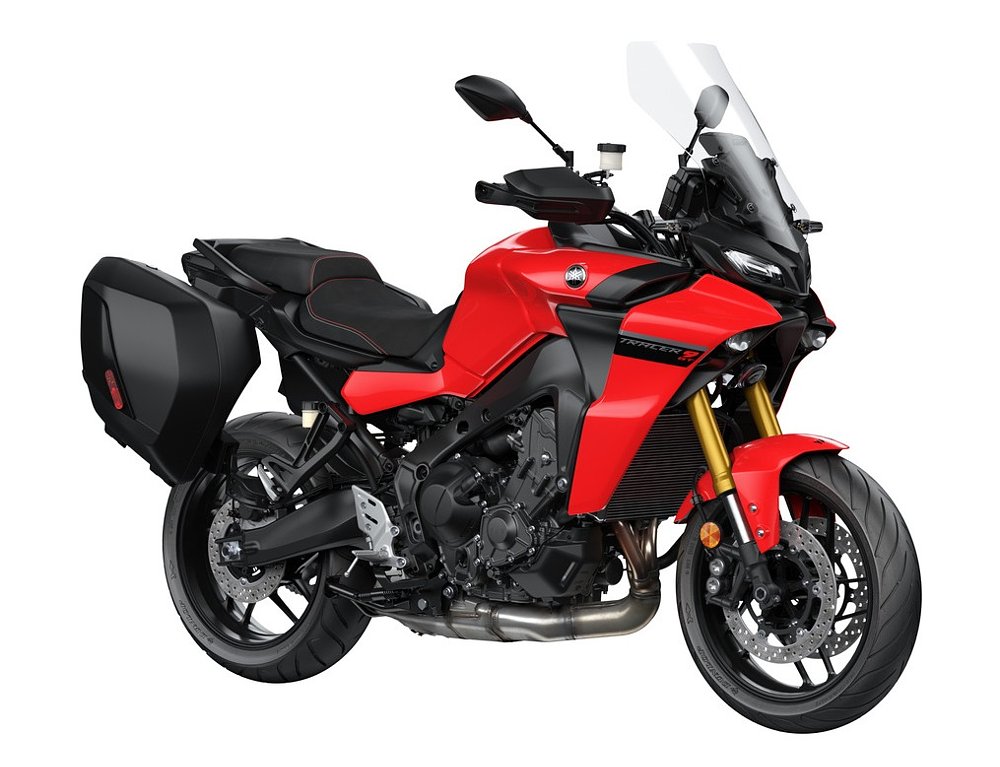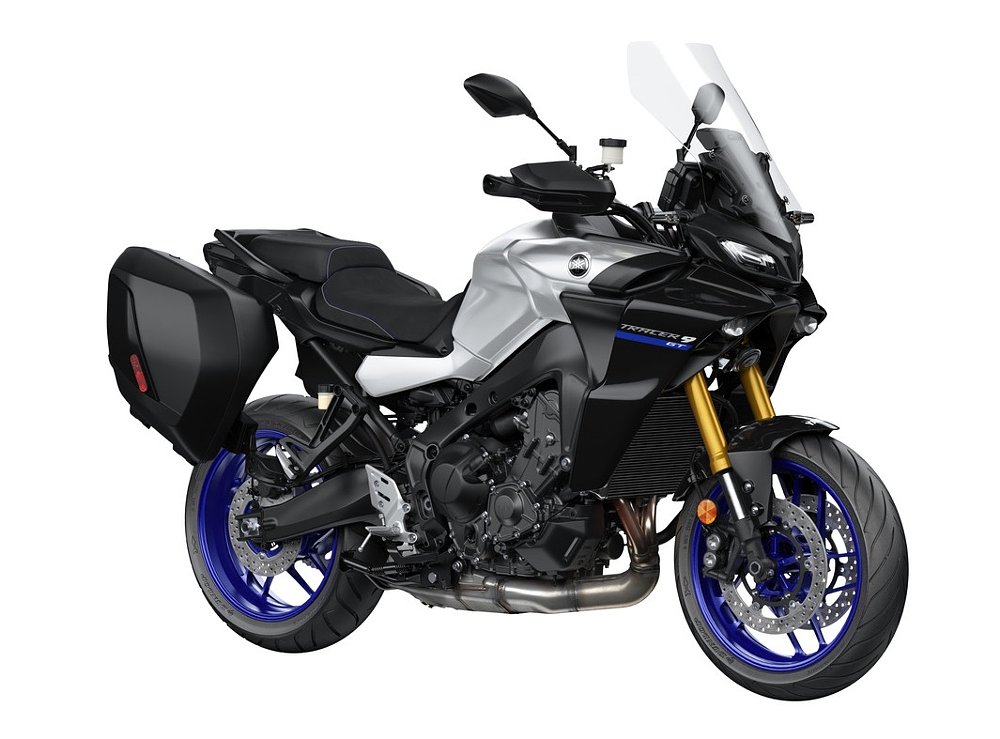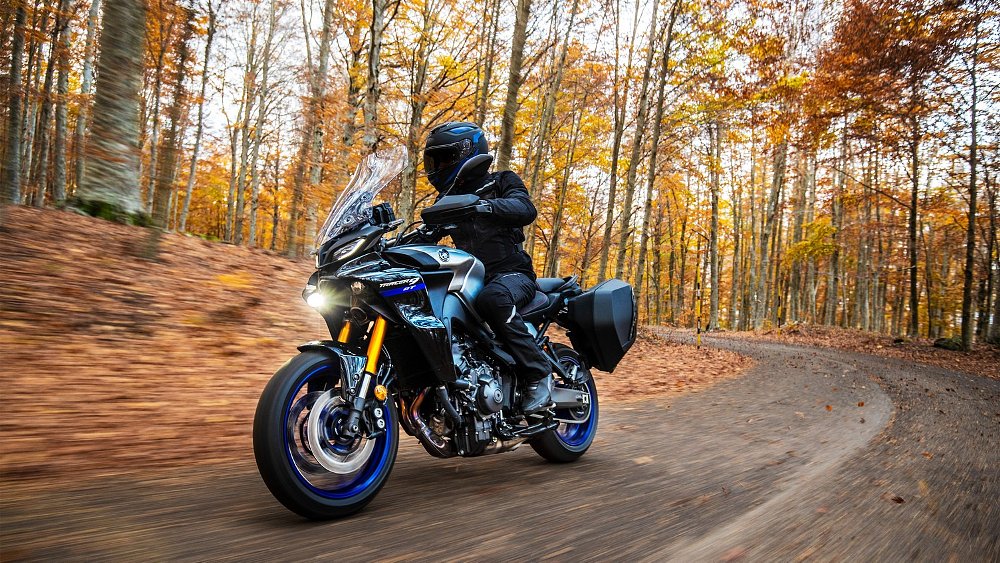Yamaha is adding a little more muscle and considerably more brains (in the form of more advanced electronic rider aids and electronically controlled suspension) to its Tracer GT and giving it a new name for 2021. Here's the Tracer 9 GT.
I don't know about you, but this strategy sounds very familiar to me because the motorcycle I put the most miles on last year was the Kawasaki Versys 1000 SE LT+ and it seems Yamaha is following the same script Kawasaki used. A few years ago, the Versys 1000 and Tracer GT were aimed at riders who wanted a competent, street-going sport-tourer with the stance and ergonomics of an adventure-touring bike and who were not interested in paying more for a lot of electronic frills. You could have called them bargains. Since then, Kawasaki, last year, and Yamaha, this year, have upgraded these bikes with advanced rider aids and electronically controlled suspension. They are no-frills no longer.

The 847 cc triple that does duty in multiple Yamaha models was stroked three millimeters to increase displacement to 890 cc for the Tracer 9 GT, for the purpose of adding low-end torque. But the more significant changes are about brains, not brawn.

Yamaha added a six-axis IMU and electronically adjustable suspension to the Tracer, just as Kawasaki did before to the Versys and as European companies such as BMW and Ducati were already offering in this class, but at higher prices. The IMU sends data to the traction control, (front wheel) lift control and braking systems to keep the rider from disaster.
The IMU also ties into the electronically controlled suspension, adjusting rebound and compression damping in the fork and rebound damping on the rear shock, based on speed and conditions. The rider can choose two suspension modes, A-1 for sportier riding with more taut settings, and A-2 for a more comfortable ride. Similarly, riders can choose two modes for the ABS.
In addition, the Tracer 9 GT has four rider modes instead of the three on the previous Tracer, so riders can choose their preferred throttle response, depending on the type of ride or the conditions. Cruise control is also part of the package.
In addition to the electronics, the Tracer 9 GT gets a slew of standard features: side cases come standard, as do 10-position heated grips, an up-and-down quickshifter, new twin 3.5-inch TFT displays, full LED lighting including cornering lights (one on each side, not three like on the FJR1300) and the ability to adjust the handlebar, footpeg, windscreen and seat positions.

Of course these additions have increased the price, but only to $14,899. That's $1,900 more than a 2020 Tracer 900 GT and it's still $3,300 less than the MSRP on the Versys. So in a way the new Tracer is still the bargain choice in this market niche. But now available with frills.
| 2021 Yamaha Tracer 9 GT | |
|---|---|
| Price (MSRP) | $14,899 |
| Engine | 890 cc, liquid-cooled, 12-valve, inline three-cylinder |
|
Transmission, final drive |
Six-speed, chain |
| Claimed horsepower | NA |
| Claimed torque | NA |
| Frame | Aluminum |
| Front suspension | KYB 41 mm inverted fork, electronically adjustable; 5.1 inches of travel |
| Rear suspension | KYB shock, electronically adjustable; 5.4 inches of travel |
| Front brake | Dual 298 mm discs; ABS |
| Rear brake | 245 mm disc; ABS |
| Rake, trail | 25.0 degrees, 4.3 inches |
| Wheelbase | 59.1 inches |
| Seat height | Adjustable, 31.9 or 32.5 inches |
| Fuel capacity | 5.0 gallons |
| Tires | Make model, 120/70R17 front, 180/55R17 rear |
| Claimed weight | 485 pounds wet, without side cases |
| Available | April 2021 |
| Warranty | 12 months |
| More info | yamahamotorsports.com |

 Membership
Membership









